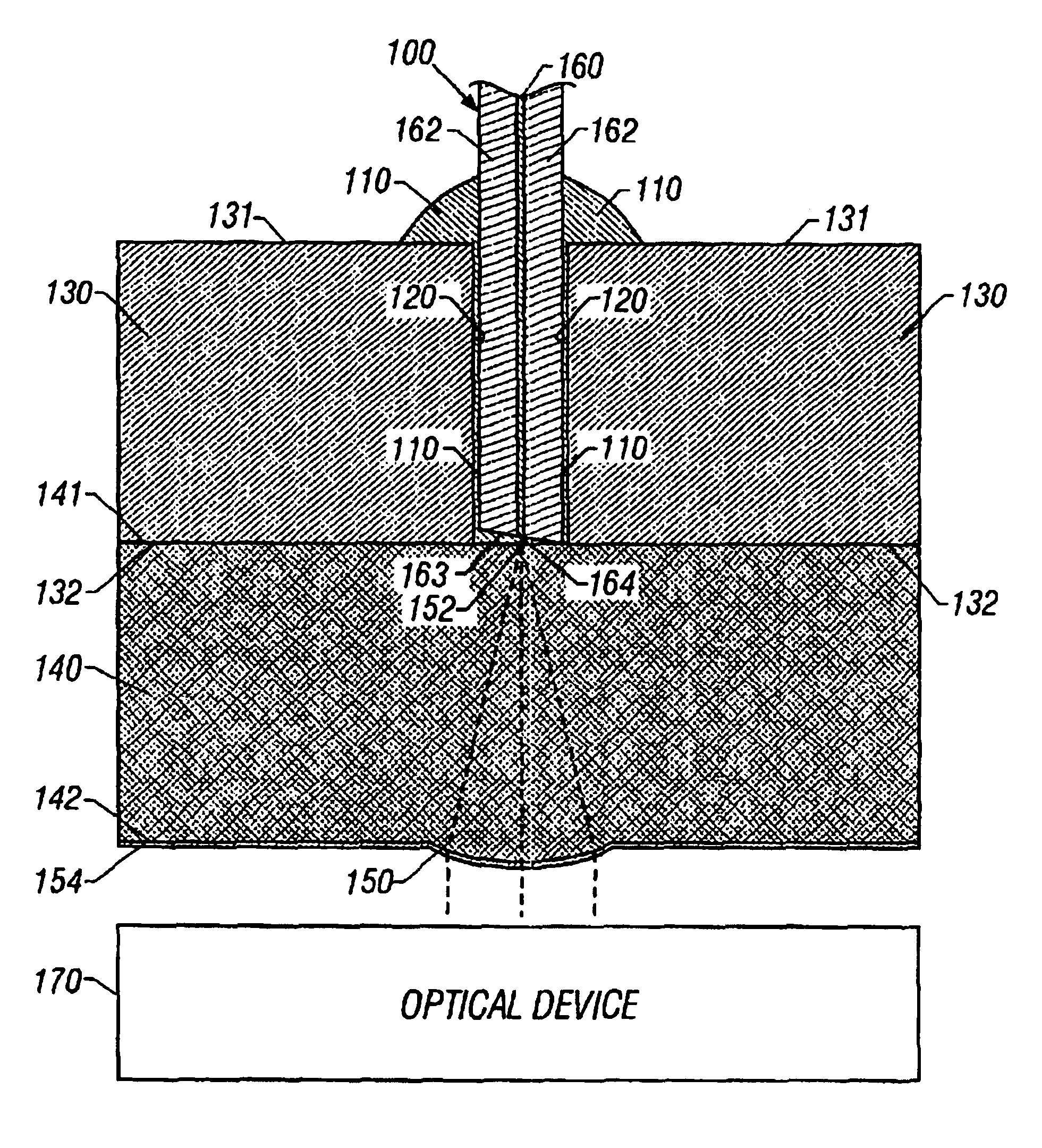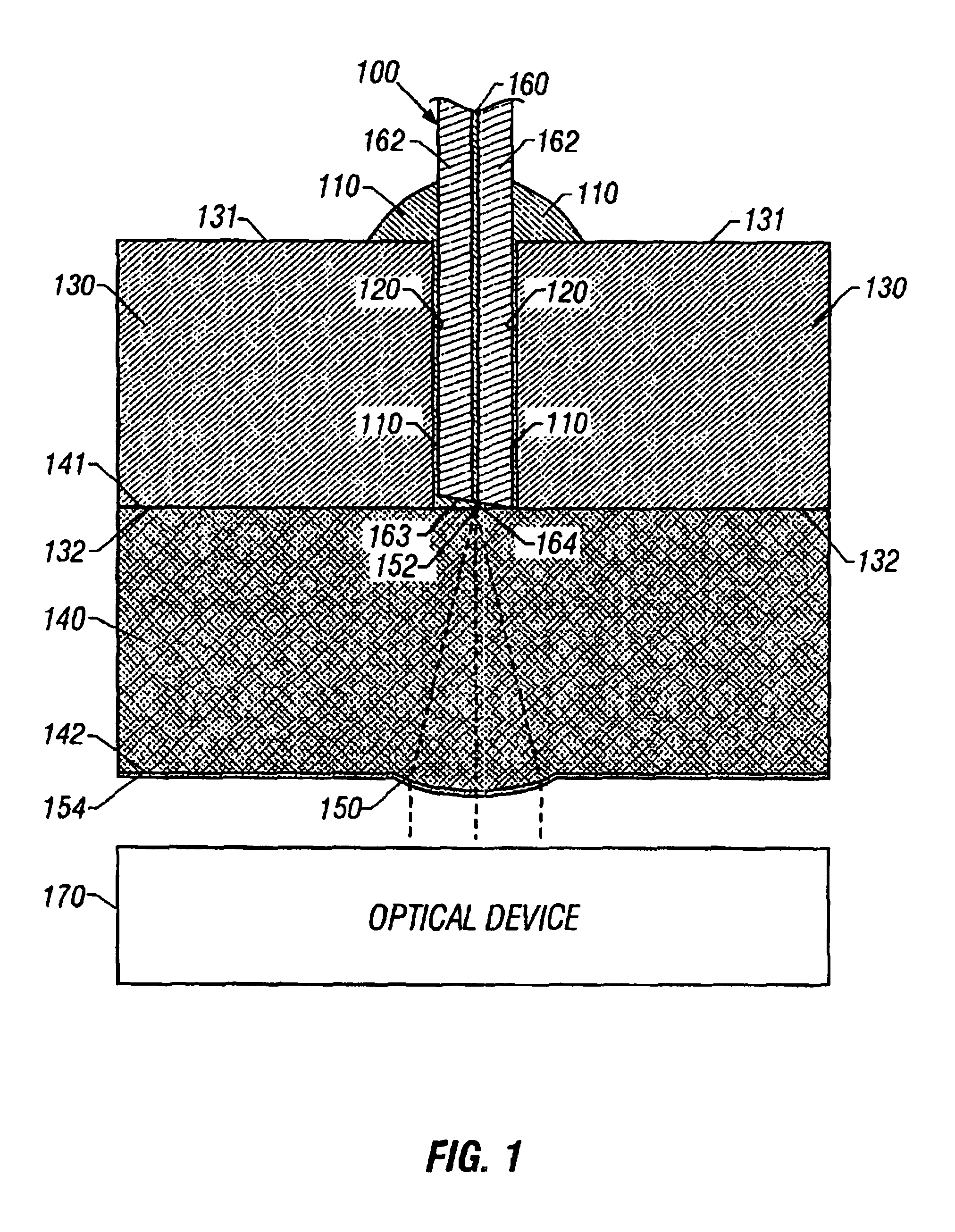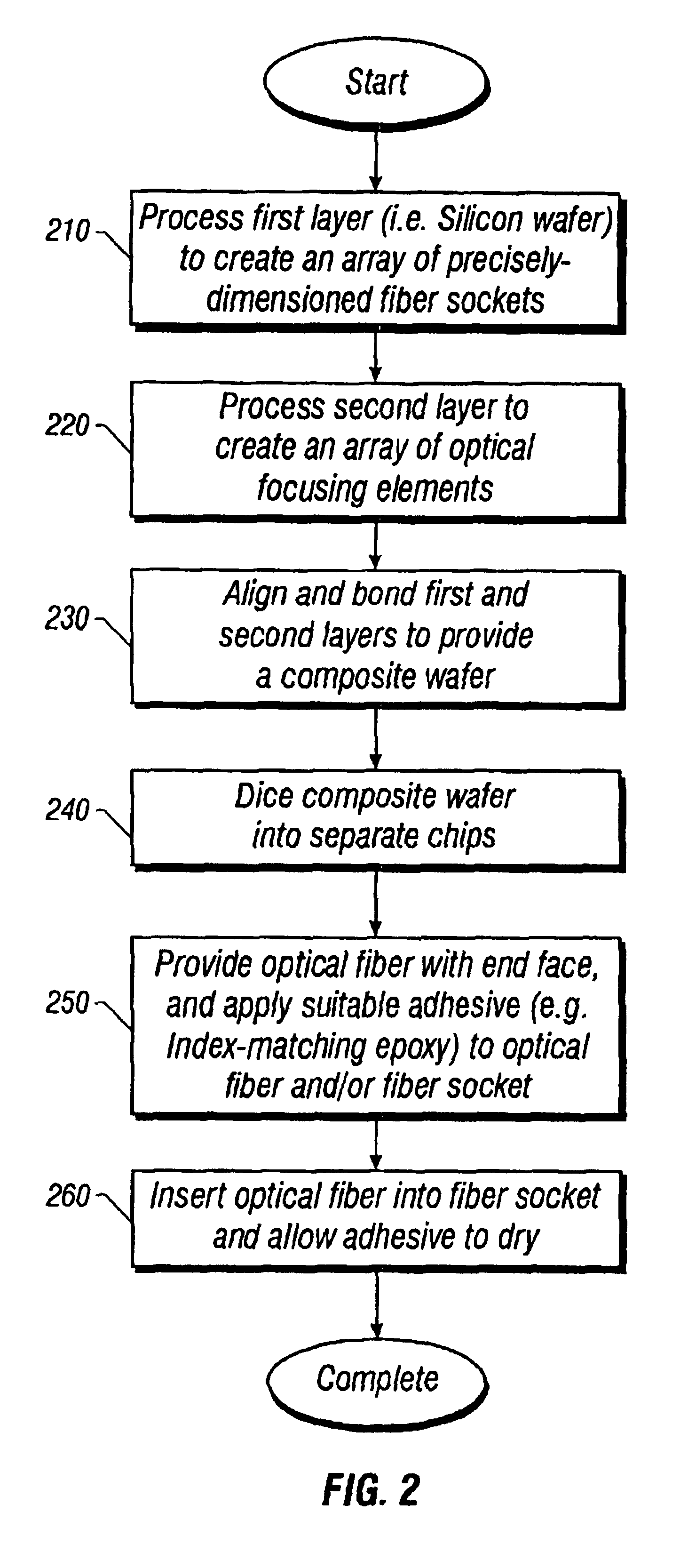Multilayer optical fiber coupler
- Summary
- Abstract
- Description
- Claims
- Application Information
AI Technical Summary
Benefits of technology
Problems solved by technology
Method used
Image
Examples
Embodiment Construction
[0035]This invention is described in the following description with reference to the Figures, in which like numbers represent the same or similar elements.
Overview
[0036]As discussed in the background section, some single-mode fibers are constructed with very close tolerances. The highly precise diameter of the optical fiber is useful when a precision etched hole is designed to match it, as described herein.
[0037]FIG. 1 is a cross-sectional view of an optical fiber coupler constructed in one embodiment of the invention. An optical fiber 100 is affixed by a suitable adhesive 110 such as an optical epoxy into a fiber socket 120, which is a through hole that has been deep-etched completely through a first layer 130. In this embodiment the first layer 130 comprises silicon that has a form suitable for etching, such as single-crystal silicon. The fiber socket 120 extends completely through the first layer from a top surface 131 to a lower surface 132. The lower surface 132 of the first la...
PUM
 Login to View More
Login to View More Abstract
Description
Claims
Application Information
 Login to View More
Login to View More - R&D
- Intellectual Property
- Life Sciences
- Materials
- Tech Scout
- Unparalleled Data Quality
- Higher Quality Content
- 60% Fewer Hallucinations
Browse by: Latest US Patents, China's latest patents, Technical Efficacy Thesaurus, Application Domain, Technology Topic, Popular Technical Reports.
© 2025 PatSnap. All rights reserved.Legal|Privacy policy|Modern Slavery Act Transparency Statement|Sitemap|About US| Contact US: help@patsnap.com



